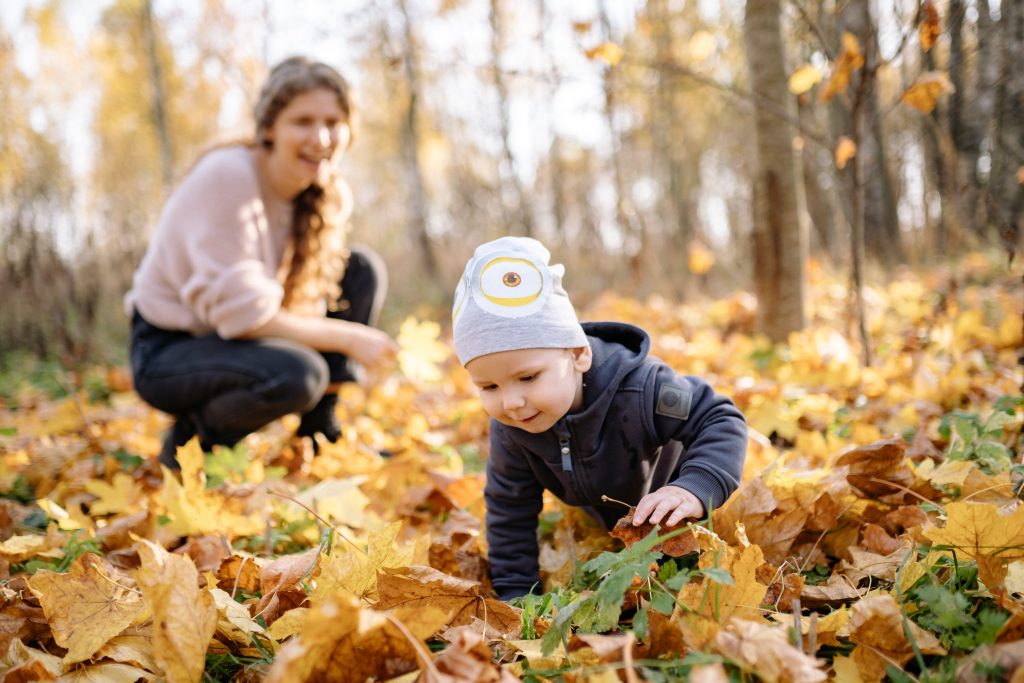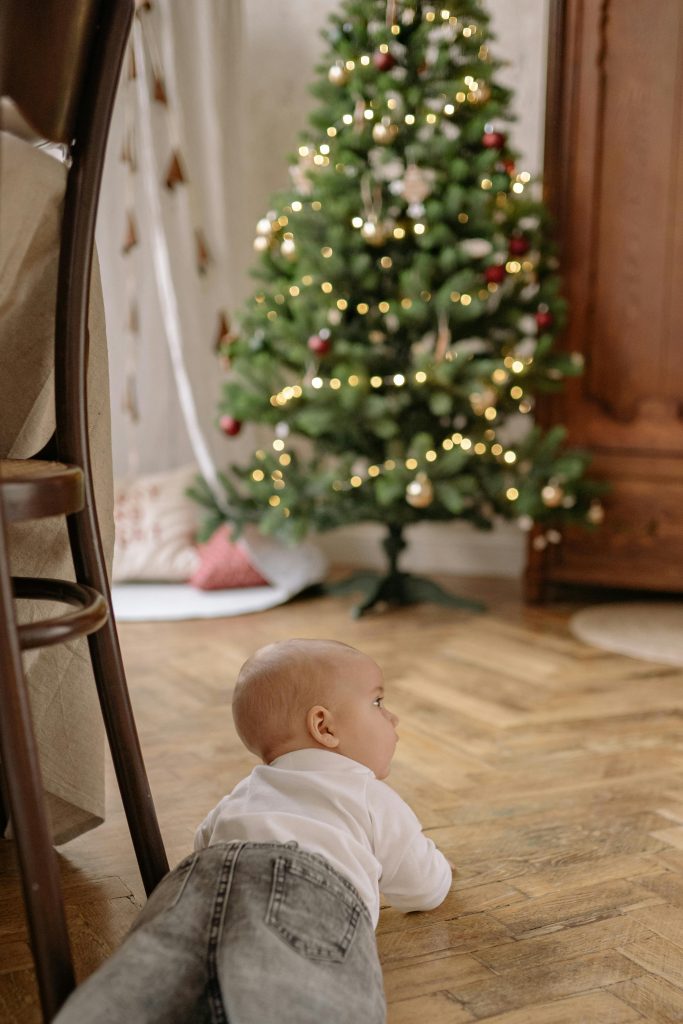You’re on pins and needles, wondering, when do babies start crawling? It’s like waiting for a pot to boil! Don’t worry – we’ve got you covered.
Dive into this guide and discover the signs, styles, and sequence of this milestone. You’ll also pick up tips to encourage crawling and ensure your little explorer’s safety.
So, whether your baby’s slow to start or racing ahead, you’ll be ready. Let’s unlock the mystery of ‘When Do Babies Start Crawling?’
Understanding Babies Crawling Development
Often, you’ll notice your baby’s crawling development unfolds in a series of stages, but it’s important to remember that each child progresses at their own pace.
This process typically begins with tummy time, strengthening their neck, shoulder, and core muscles. Then, they’ll start practicing moves like planking, rocking back and forth, and turning in circles.
You can facilitate this by providing adequate tummy time, making eye contact, and getting down on the floor with them. Some babies start with belly crawling, but others may skip this step.
It’s crucial to remember that the variety in crawling styles and preferences is normal and reflects individual differences. So, don’t fret if your baby’s crawling development doesn’t follow the ‘typical’ path. They’re just finding their unique way of exploring the world.
When Do Babies Start Crawling & Crawling Readiness Signs
Babies typically start crawling between 6 to 10 months old. However, every baby is different, and some might start earlier or later than this timeframe.
As you observe your little one’s exploration, you’ll notice signs indicating they’re getting ready to crawl. These signs are your baby’s way of showing you they’re developing the strength and coordination needed for this exciting milestone.
- Rocking back and forth: When your baby starts balancing on their hands and knees and rocking, it’s a sign they’re prepping for forward motion.
- Mini push-ups: During tummy time, if your baby pushes up on their arms and lifts their chest off the ground, they build the strength necessary for crawling.
- Crawling in place: Your baby might initially appear to crawl without moving forward. These ‘revving’ motions signify that crawling is just around the corner.
Crawling Styles
You might notice that your little one’s crawling style mightn’t be the same as another baby’s. That’s because there are different crawling styles like the classic crawl, belly crawl, bear crawl, rolling crawl, and bottom scoot crawl.
Each style is unique and progresses at its own pace, so let’s discuss these in detail.
Classic crawl
In your baby’s journey to mobility, the classic crawl is one style they might adopt. This traditional method involves moving one arm and the opposite knee forward simultaneously. It’s a sight that warms every parent’s heart as it signals growing independence in their little one.
- Strength and coordination: The classic crawl showcases your baby’s developing strength and coordination. Expect to see this anywhere from 6 to 10 months.
- Dexterity: It also demonstrates their dexterity, as they must balance on one arm and knee while moving the others.
- Cognitive development: This form of movement aids cognitive development, as it requires an understanding of how to control and move the body.
Belly crawl
Moving on from the classic crawl, let’s dive into another common style known as the belly crawl. This crawling style is often the first foray into mobility for your little one. Characterized by pulling forward with the arms while the belly and legs trail along the floor, it’s also affectionately called the commando crawl.
You’ll notice this style emerging between 5 to 8.5 months. It’s a completely normal stage of development. While some babies transition from belly-crawling to a hands-and-knee style, others might skip straight to walking. There’s no one-size-fits-all in the world of baby development.
Bear crawl
Shifting gears from the belly crawl, let’s explore another fascinating style: the bear crawl. This style is quite adorable and resembles a bear cub learning to walk.
- Posture: Your baby will balance on both hands and feet, keeping their knees off the ground. It’s like a mini push-up position, which requires strength and balance.
- Mobility: They move forward by pushing off with their feet. It’s a fun and efficient way to get around, and it’s also great for developing body strength.
- Transition: Most babies transition to the bear crawl after mastering the belly crawl. It’s a sign of increased strength and coordination.
Rolling crawl
After exploring the bear crawl, let’s focus on another captivating method your baby might adopt: the rolling crawl.
This style, as the name suggests, involves your baby rolling from one place to another. It’s common in babies who’ve mastered rolling over and have a penchant for this movement. Your little one might roll to reach a toy or you rather than crawling.
While it might seem amusing, it’s an excellent way for your baby to move around before mastering the traditional crawl. Remember, each baby is unique and might adopt a different crawling style.
As long as they’re moving and exploring their environment, they’re on the right path.
Bottom scoot crawl
During your baby’s crawling adventures, you might notice them trying out the bottom scoot crawl. This is a unique crawling style where your little one sits on their bottom, using their legs to push themselves forward.
There are a few key things to remember with this:
- Safety first: Ensure your floors are clean and clear of small objects. Your baby is lower to the ground and may pick up tiny, potentially dangerous items.
- Enjoy the process: Every baby is unique, and so is their crawling style. Embrace your baby’s approach.
- Development is non-linear: Don’t worry if your baby prefers this style. They’ll likely try other movement methods as they explore their environment.
Crab crawl
You’ll notice that some babies choose a less common method of getting around: the crab crawl. This style is named after the sideways movement of a crab. Instead of moving forward on their hands and knees, your baby will sit on their bottom, lean back on one arm, and use the other arm and both legs to move sideways.
This type of crawl is an efficient way for your baby to get around, especially if they’re uncomfortable on their stomach. It’s also a great way for them to build strength in their arms and legs. But don’t worry if your baby prefers this method – it doesn’t mean they’ll never learn to crawl traditionally.
Each baby is unique and develops at their own pace.
Encouraging Your Baby to Crawl
One can encourage their baby to start crawling by incorporating certain activities into their daily routine. It’s all about making the process fun and engaging for your little one. Here are three key steps:
- Maximize Tummy Time: This helps strengthen your baby’s neck, shoulder, and arm muscles. Please encourage them to lift their head and push up on their hands.
- Entice with Toys: During tummy time, place a favorite toy out of reach. This motivates the baby to move towards it and can lead to crawling.
- Be their Role Model: Get down on all fours and show them how it’s done. They’ll love the game and will try to mimic your movements.
Importance of Tummy Time
Building on what we’ve discussed, it’s crucial to understand that much of your baby’s crawling development hinges on tummy time. Tummy time is when you place your baby on their stomach while they’re awake and supervised. It’s essential for developing the muscles and coordination needed for crawling. Moreover, it strengthens your baby’s neck, shoulders, and upper body, allowing them to start moving independently.
Don’t worry if your baby seems uncomfortable or cries during tummy time at first. You can gradually increase the duration as they get used to it. Remember, every baby develops at their own pace. So, be patient and consistent with tummy time. It’s a stepping stone to crawling, setting the stage for your little one’s mobility.
Crawling’s Impact on Sleep
While your baby is making strides in their crawling development, you might notice that their sleep patterns start to change. This is perfectly normal as babies are eager to practice their newfound skills, often at the expense of sleep.
- Sleep Regression: The excitement of exploring often leads to a sleep regression around the time your baby starts crawling. They might wake up more often at night and have shorter naps during the day.
- Restless Sleep: Your baby might seem more restless during sleep, moving around in the crib as they practice their crawling skills.
- Increased Need for Sleep: With all the physical exertion from crawling, your baby might need more sleep overall. However, this could take a few weeks to regulate.
Addressing Crawling Delay Concerns
After observing your baby’s sleep and crawling patterns, you might be wondering what to do if your little one seems to be delayed in reaching the crawling milestone. While it’s natural to worry, remember that babies develop at their own pace. Some may start crawling later than others or skip the stage altogether.
If your baby’s crawling seems delayed, consult your pediatrician to rule out potential developmental concerns. Encourage tummy time to strengthen your baby’s neck, arms, and core muscles, which can help them start crawling. Experiment with different toys and positions to make tummy time fun.
Above all, be patient and provide positive reinforcement. Your baby will crawl when they’re ready and comfortable.
Conclusion
In the end, every baby’s crawl is a unique dance. It’s important to remember that all babies develop at their own pace. So, whether your little one is showing signs of crawling or not, don’t sweat it.
As the adage goes, ‘Patience is a virtue.’ Keep encouraging them, ensuring their safety, and cherishing these precious moments. Remember, the journey is just as important as the destination.
Happy crawling!
Reference:
https://parentingscience.com/when-do-babies-crawl/
https://huckleberrycare.com/blog/when-your-baby-starts-crawling
https://www.parents.com/baby/development/crawling/when-do-babies-crawl/

